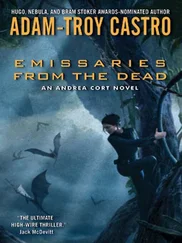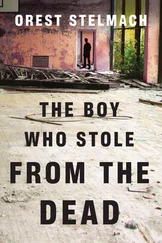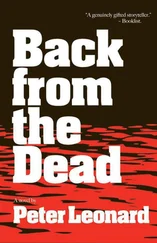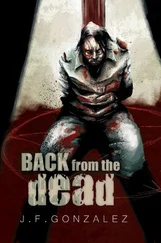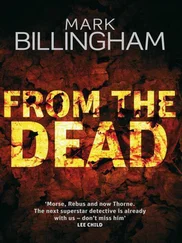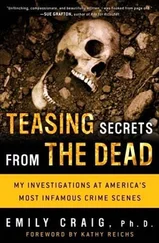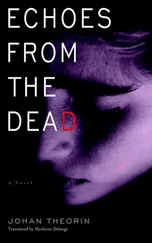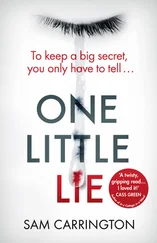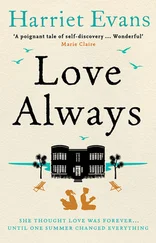Marvin nodded. “All right then,” he said finally. “I think we've got to dig up her grave.”
Detective Ferris and I agreed that an exhumation and DNA comparison were warranted. We, too, were eager to solve the mystery of the Tent Girl, who had become such a big part of local legend. But it was still the middle of winter, and the ground was frozen solid. Although the coroner soon got the exhumation order from the state officials, it would be weeks before the weather cleared enough for us to use it.
Then, one day, I heard on the radio that the temperature was supposed to get up to the low forties, with sunshine at least until the afternoon. I called Marvin, who alerted the backhoe operator at the county garage and contacted County Sheriff Bobby Hammons. Later that morning, we all met at the graveyard.
The weather report had been a bit optimistic. The clouds were gray and lowering as we arrived at the cemetery, and the day was bitterly cold. Somehow, the bleak weather seemed appropriate for our morbid task-but I could have done without the sleet, which started to come down lightly, then heavily, after I'd been down in the grave for an hour or so.
“You going to be much longer, Doc?” Marvin called down after about five minutes of heavy sleet.
“Maybe another hour?” I called back. I was cold, too, but at least I was down here out of the wind-and moving. Poor Marvin and the sheriff had nothing to do but stand in the open cemetery and wait for us to hand up more bones.

When we finally got the bones back to the lab, I was eager to do my own analysis. Marvin had been right about one thing: Forensic science had advanced a good deal in the last thirty years, and I was sure I could find out more than my predecessors had. Although the people who had done the analysis thirty years ago had been expert pathologists, they didn't have the benefit of modern forensic techniques or of anthropologic expertise. And this victim's soft tissue had been badly decomposed when they found her, making it even harder to base an age estimate upon pathological evidence. As an anthropologist, I was trained to pick up on things that the previous scientists might have missed.
One thing I saw right away was that the woman was much older than they had thought. By my estimation, she was in her mid-twenties instead of in her teens-another indication that she might be Bobbie Taylor.
When I had finished a standard analysis of the bones, I sent the DNA sample down to LabCorp, the private DNA laboratory in North Carolina that would later analyze the genetic material of Henry Scharf. Then, all we could do was wait. Two months later, on April 28, 1998, the DNA testing comparing Tent Girl's genetic material with a sample from her sister confirmed what Todd had suspected from the first: Tent Girl and Barbara Ann Hackmann Taylor were one and the same.
When the Taylor family learned of the positive identification, they decided to return to Georgetown for the burial service they hadn't been able to have thirty years before. Because our community had more or less adopted Tent Girl, the entire extended family, including Bobbie's adult daughter, decided to leave her here, her monument intact, although they did add a simple plaque with her real name. Bobbie's husband was dead by then, and there was no chance for a trial to bring justice for Bobbie, but at least her family could come together for a last farewell.
It seemed as if everybody in Georgetown came to the service, trying to look at the family-and Todd-without seeming to stare. Todd, of course, was the hero of the day, with Rosemary, Bobbie's daughter, and the rest of the family clustered around him, thanking him again and again for not giving up on his quixotic quest. I wished we could have told the family who killed Bobbie and promised them some kind of justice for her lonely death. But as I watched Rosemary and her niece shaking Todd's hand and patting him on the back, tears of relief streaming down their faces, I was glad that at least we had been able to give Tent Girl back her rightful name.

The story of Tent Girl evokes for me one of the most important-and poignant-parts of my job: victim identification. It's the police's job to catch the killers. It's my job to analyze the remains, which often starts and ends with figuring out who the person was, so that the law enforcement team-or the family-can take it from there. Much as I like working with the investigators, it's important for me to remember that their job is fundamentally different from mine. And if I forget that basic difference, I might get into real trouble when it comes time to testify in court. It's important for all parties-the lawyers for both sides, the judge, and above all the jury-to see me as supremely neutral, simply there to tell the scientific truth as I see it. If I ever once seem to be part of the prosecution's team-if I ever start to think of myself that way-my value to the process will be lost.
Because so much of crime drama and detective fiction focuses on catching the bad guys, my part of the process comes in for a lot of misrepresentation. In addition to everything else, movies, TV, and mystery novels often make my job seem a lot simpler than it is. If you don't know any better, you might get the idea that there's some kind of national database out there, recording every detail about every missing person in the country. You might easily come to believe that once the police have found an unidentified body, that magical computer will spit out an instant match.
Nothing could be further from the truth. Hundreds of people go missing every day-and, for many, nobody even bothers to report their absence. Say a family has a troubled teen at home, perhaps even a child who is being abused. The child runs away and the family-angry or ashamed or simply confused-doesn't report it. If that youngster's body turns up three states away with no identification, how can investigators ever give it a name? People don't come with bar codes. If someone asks us to compare a set of bones to the medical or dental records of Mary Smith or José Lopez, that we can do. But to pull a name out of thin air-no.
Even when there are missing persons reports, matching them to a body or a set of remains can be tricky. There is a national database, the National Crime Information Center (NCIC), which theoretically serves as a clearinghouse for matching missing persons reports with reports of unidentified remains. However, valuable though it is, the NCIC has a number of limitations.
First, as I said, many missing persons simply don't show up in the database. Maybe their loved ones never thought to file a report-perhaps because they fear the police, or are living in denial, or are simply ashamed to admit that their husband, wife, or child has seemingly left without a trace.
Then, too, a missing persons report is not always a high priority for an overworked police department that might have more than its share of homicides, robberies, and assaults to deal with. Many departments wait till the end of each week to file their missing persons reports, or maybe even the end of each month. If I've got a set of remains in my lab, I might not find the matching report the first time I look-or maybe even the second. Of course, the loved ones might take weeks, months, or even years to go to the police in the first place. And let's not forget human error-some agencies simply neglect to put their reports in the database.
Then there are problems with the way the NCIC records forensic information. The database was originally designed to match up stolen property and fingerprints, and the original fingerprint system has been taken over by an automated fingerprint identification system (AFIS). NCIC is still the only code-based data system available to those of us who try to identify the dead. So if everyone collects all necessary data from both sides of the equation (missing on one side, unidentified on the other) and if there are enough correctly coded unique identifiers (dental records, tattoos, previously broken bones, etc.), investigators stand a good chance of finding a match-if there is one.
Читать дальше



